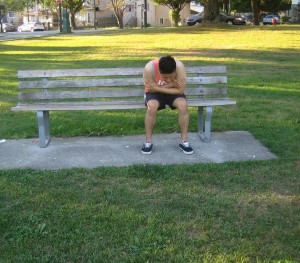An earache is a painful sensation that can be experienced in the inner or outer ear that causes pain that can be sharp, dull and piercing and affects one or both ears and can be short-lived or chronic.
An earache can be an agonizing experience for anybody, especially for a young child. Otitis media is a middle ear infection that cause pain just like otitis externa or “swimmers ear”. After these infections, the pain can persist and even recur when cold air touches the sensitive tissues of the ear. In some people, the nerve endings of the ears are always prone to cold.
Even in the coldest of the weather, keep the ears warm by using mufflers or a hat that completely covers the ears to help in blocking the wind out. Using a scarf can also be used by adults and older children, but it is not advisable for infants and young children especially when they are playing.
A small cotton ball can be placed directly on the outermost opening of the ears. Simply roll a cotton ball to the size of the opening of the ear, but avoid placing cotton balls on the ears when driving.

Treatment
- Take the prescribed over-the-counter analgesics pain medications such as acetaminophen and ibuprofen in order to lessen the pain.
- Apply a warm compress on the affected ear to lessen the pain in the ear caused by wind. You can also soak a face cloth in warm water and place on the affected ear. Another way is using a hot water bottle where the individual reclines his/her head on the bottle as if it is a pillow to minimize the pain in the ear.
- Moisten a washcloth and place it in a plastic sandwich bag and then microwave it for a minute. Gather all the steam, seal it tightly and wrap it in a flannel cloth and then apply over the affected ear for at least 30 minutes in order to help lessen pain.
- Use a heating pad with low setting. The heat helps in melting the earwax. Just remember to avoid using a heating pad on small children.
- Use an ice pack on the affected ear for 15 minutes to lessen the swelling and the sensation of warmth on the ear. Make sure to wrap the ice pack with a piece of cloth before placing on the affected ear.
- Use oral or nasal decongestants to lessen the pain in the ear. Take the prescribed pain medications such as ibuprofen or acetaminophen in order to help lessen the pain.
If the symptoms do not lessen with pain medications, warm compresses and infection is likely or there is clear fluid draining out of the ear, seek medical help immediately.
Tips
If the individual continues to suffer from earache while outdoors, he/she should wear a scarf and a hat that can cover the ears to protect against the wind. In addition, place cotton wool on both the ears.
FACT CHECK
https://www.nhs.uk/conditions/earache/
https://www.healthline.com/symptom/earache
https://www.webmd.com/cold-and-flu/ear-infection/why-does-ear-hurt#1

I was a passenger in a car in Florida – warm weather obviously. A gust of wind came off the water and it really hurt my ear. It is still sore a week later. Could that compact wax or cause damage?